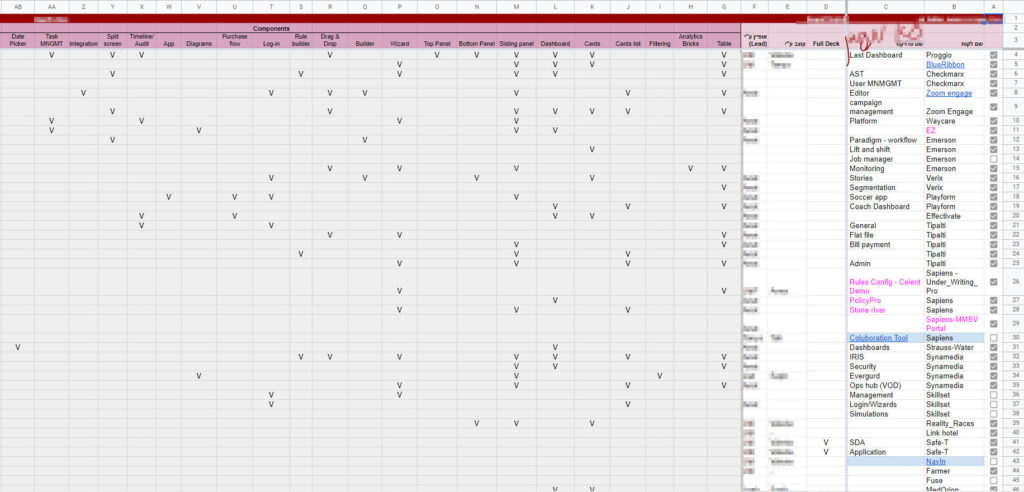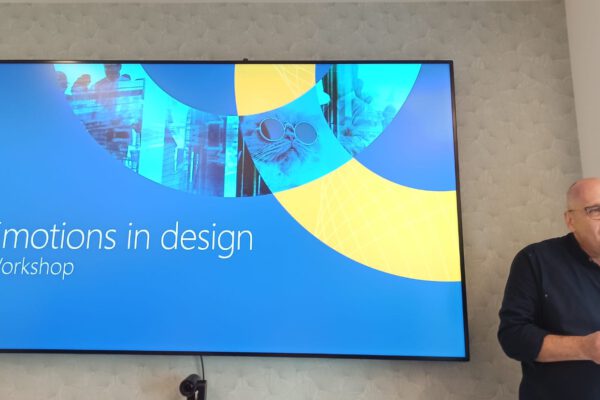It is not easy to be a project company
At its core, Studio Salant ID is a project company. We have clients from different sectors of the economy who contact us, asking to hire our service for UX wireframing and/or design work. We carry out the requirements in constant dialogue with the clients and in the best fit for the user experience and move on to the next project. Projects come and go, sometimes lasting for several months and sometimes for a period of several years. Be that as it may, each unique project reveals new and diverse worlds of content and teaches us something more about the outside world. From all this and more, diverse and interesting projects come into the world, which though they do not have much in common, always have similarities between them, whether it is in the work processes, the different needs of the system, or just in the worlds of content and data visualization.
Out of all these and more, the necessity arose to create a knowledge preservation system and from this the question arose – how do you preserve such a wide knowledge accumulated over the years in a variety of projects among different team members? After all, a single person has a limited capacity for information, and it is true that Udi, the director of the studio, remembers quite a bit (trust me), but this is also limited and a level of accuracy in details is not possible. In addition, this information cannot be shared in a good, correct and accessible way with other people. And just to be clear – since the day the studio was established in 2016, we have worked on over 200 different and diverse projects.
In the world we live in, information clouds are a familiar phenomenon – we all save the photos we took on vacation in Thailand in Google Photos (or in any other information cloud) so that one day we want to remember and it will be accessible there with a click (rather than in a photo album at mom’s house that is gathering dust). Facebook, for example, is also a platform whose capabilities are exactly these. All of these are highly valued and accessible systems, but they are very accessible for B2C use (a company that provides service to an end customer), and in the studio there is a need for something more B2B (an intra-organizational system for knowledge retention).

In order to preserve and manage the knowledge, you must use an שssets management system that allows you to store, manage, and label the designs / screens / documents that are uploaded to it. In the field there are a limited number of solutions for small-medium businesses and in a thorough process we examined about 3 systems, during which one product in particular — Eagle — stood out as the best system for our needs. As a result, we decided to start and establish our internal database using it.
Eagle Platform
The Eagle system is used for preserving visual knowledge, where you can upload images and ideas and manage them in a smart and easy-to-use way. The system allows uploading photos to its information cloud, tagging them, creating folders for internal distribution, and more. In this way, it is actually possible to create a wide database of visual materials and share them among colleagues.
The initial construction process
All is well and good, but where do you start? There are so many projects over the years that need to be mapped and the process is extremely long. First, there is the need to understand what software each of the projects is sitting on. The programs for UX characterization and design have been perfected over the years and quite a few new programs have entered the market that allow higher capabilities, such as Axure for characterizing or Figma for characterizing and designing. Switching to and from different design tools can be beneficial, but also simultaneously produces several versions or duplications of designs that sometimes need to be switched between tools. Second, you need to gather all the relevant screens and export them into image files. In addition, you need to create a tagging system that covers all the needs of the studio and that each photo will have at least one relevant tag. After this long process, you can start uploading the files by opening dedicated folders for each project and manually labeling all the images. The system makes it possible to produce labels in an easy and convenient way by marking several images together, which made the process significantly easier.

The platform in everyday life
And how do we use the system on a daily basis you ask? Every time a project has matured into characterized and designed screens, we upload all the system pages to a dedicated folder in eagle, labeling them with a variety of tags. This starts with tags realted to the platform type (mobile, desktop, tablet) and then tags related to the screen’s use, like user management or login page. The final tag tends to be about a specific component or features to highlight, such as table, button or timeline. Sometimes, when the need arises, we create new labels and condense them, sometimes we update project screens that have improved and grown since the last update, and more. The ongoing work in the system is extremely important because otherwise the preservation of knowledge tends to fall through the cracks and the value of the system is missed.
This whole process is meant to commemorate our hard work in the variety of projects so that we feel appreciated…just kidding! While there is some truth to that sentiment, we mainly use Eagle as a tool in our daily work. In internal meetings you can always say “look in Eagle for project X, there is something similar you did in the past that could fit exactly with this project” or when presenting to a client, you can show them a variety of projects done in the studio over the years in a few quick clicks.





